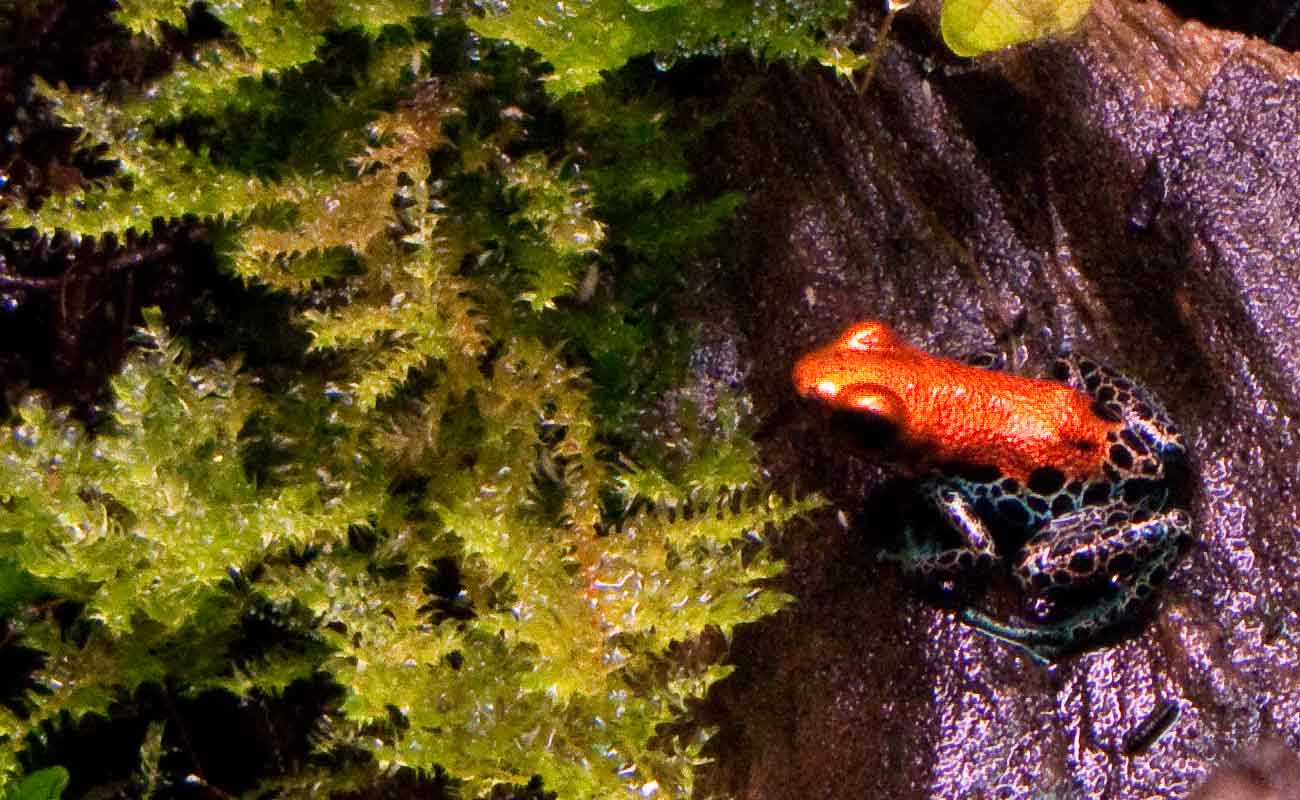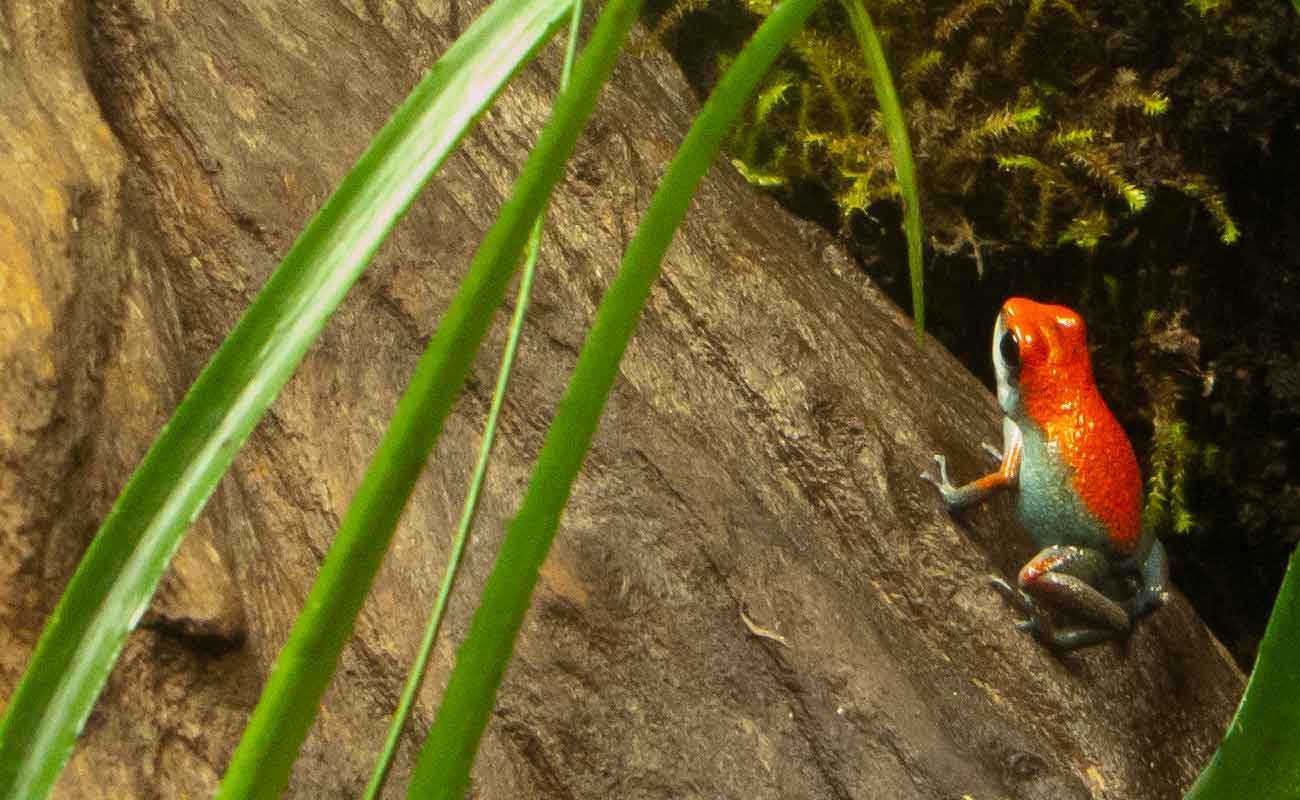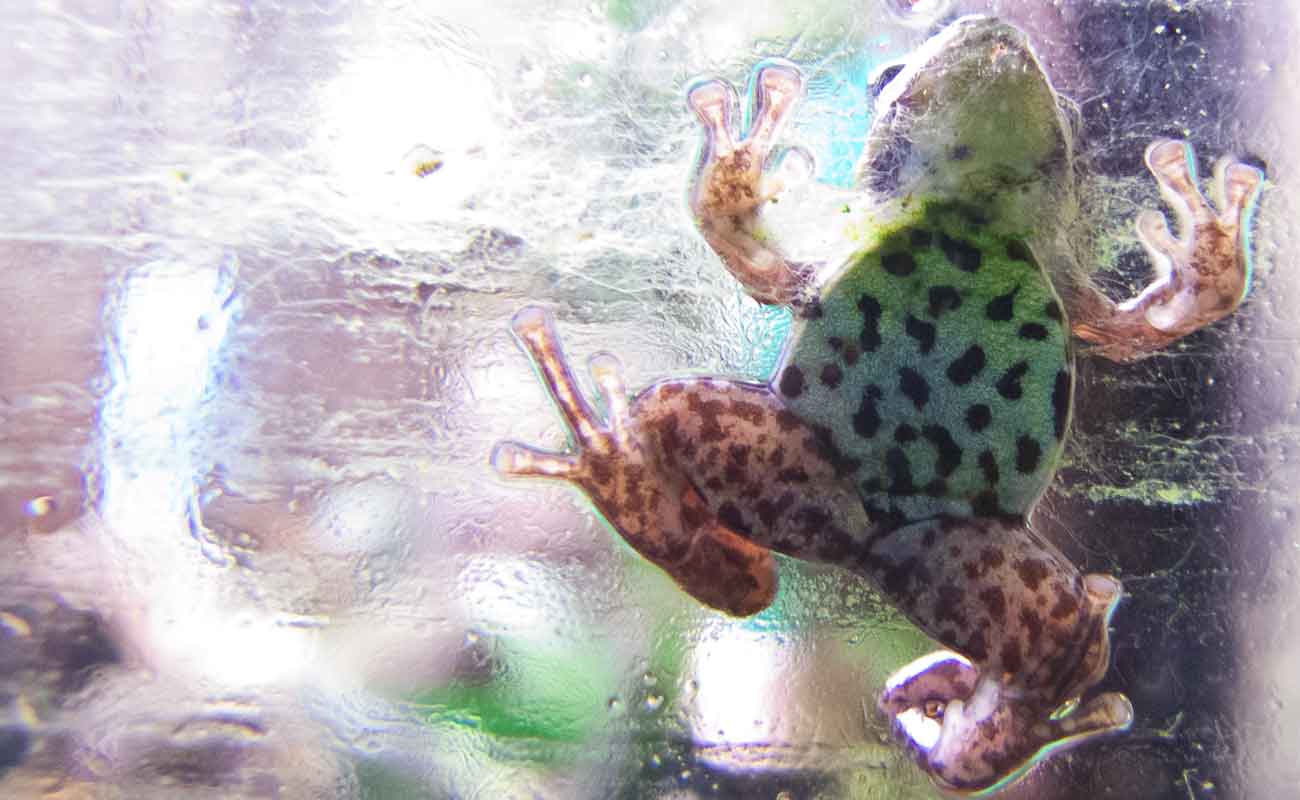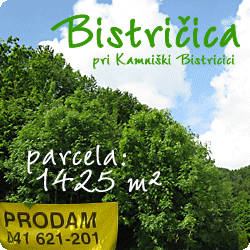1. Dendrobatidae: Dendrobatinae – The genus Ranitomeya (Bauer, 1988)
Small, colorful frogs of the Ranitomeya species have a predominantly smooth dorsal skin. In this genus a variety of evolutionary highly advanced poison frogs that do not execute a cephalic amplexus can be found. The larvae are relativelly large, as are the eggs in the frog's very small clutches. The larvae are carried to phytotelmata either individually or in small groups and are later left to fend for themselves (some exceptions can be found in some species of the R. Ventrimaculata group). The habitats of most species are primary forests. However, mainly because of human land use, a considerable number of them are now restricted to forest remnants. Aside from the ground-dwelling species there are some that live in the udnergrowth and a few are even specialized tree-dwellers.
This taxon comprises species that were previously placed in Dendrobates sensu lato. In addition to two distinguished species groups there are also a few other species that have been allocated to this genus only tentatively.
1.1. Ranitomeya group
This group includes a variety of very small (< 20 mm) species that exhibit numerous behavioral similarities. Their oviposition namely takes place only after spermaposition and the cephalic amplexus is absent. Distinctive features are also the larval relocation individually or in twos by the male and the use of phytotelmata as nurseries for the larvae. They can be recognised by the soft advertisement call that does not carry far and is believed to be used only for close range communication. Apart from the main disribution range that can be found in Pacific Colombia and Panama, there are also some species known from the eastern Andes, and R. Abdita even occurs on the western margins of Amazonia.
The allocation of some species assinged to this group yet needs to be properly calrified. No genetic information is available for the Andean species in particular, which leaves the possibility that they belong to a different evolutionary lineage than R. minuta and its relatives inhabiting Panama and the Pacific side of Colombia. That leaves their relationship with Minyobates steyermarki further unresolved.
1.2. Ranitomeya ventrimaculata group
This relatively small species, which does not exceed 24 mm in length, is native to the Amazon Basic, including the western versants of the Andes, and some large parts of the Guayanas. Aside from their size, their dorsal color pattern that includes yellow, orange or red is the frogs’ distinctive feature, alongside with limbs, almost always irregularly dotted with black on a greenish, bluish, brownish or gray background, which usually creates the impression of a reticulated pattern. Their throat is conspicuous for its colorfulness and serves, along with the soft, humming call, for intraspecific communication.
The larvae are installed in phytotelmata, often in leaf axils of bromeliads and heliconias, bamboo internodes, minute water-filled tree holes, etc. and in some cases supplied with nutritive eggs.
The genetic analyses have confirmed the allocation to this group to most species but, nevertheless, the individual species are fraught with major taxonomic problems because they can often not be differentiated with certainty on the basis of their color patterns – one of the reasons for this being so is that the species, living in the same natural habitat, have adapted to each other as far as their color patterns are concerned. This type of Müllerian mimicry is believed to serve as protection since predators acknowledge that frogs of a particular appearance are poisonous and therefore inedible. On the other hand, this mimicking of another species causes individual populations of the same species to be so dissimilar that it is very hard, if not nearly impossible, to identify them as being conspecific. Moreover, there are many allopatric populations with minor differences of which one cannot be quite certain whether they are an indicator of separate species or intraspecific variability.
Silverstone (1975) still included this different “varieties” in just one species, Dendrobates (now Adelphobates) quinquevittatus, which nowadays actually represent at least seven separate species – and these, again, most likely include even more species.
Therefore, in case of uncertainty when keeping such species in a terrarium, only those specimens should be kept together and bred with that originate from the same locality in order to prevent a genetic chaos that often leads even to infertility.
Crossbreeds are known to exist in the combinations of R. reticulata x R. fantastica and R. reticulata x R. amazonica, R. ventrimaculata x R. lamasi and different R. ventrimaculata.
Within the group, R. imitator and R. vanzolinii, as well as R. lamasi and R. biolat are genetically closely related. This group of species is also even more united mainly because all produce whitish gray eggs and show the most advanced form of parental care within the group of R. ventrimaculata. Also closely related in the genetic aspect are R. variabilis and R. ventimaculata, R. reticulata and R. vabzolinii.















